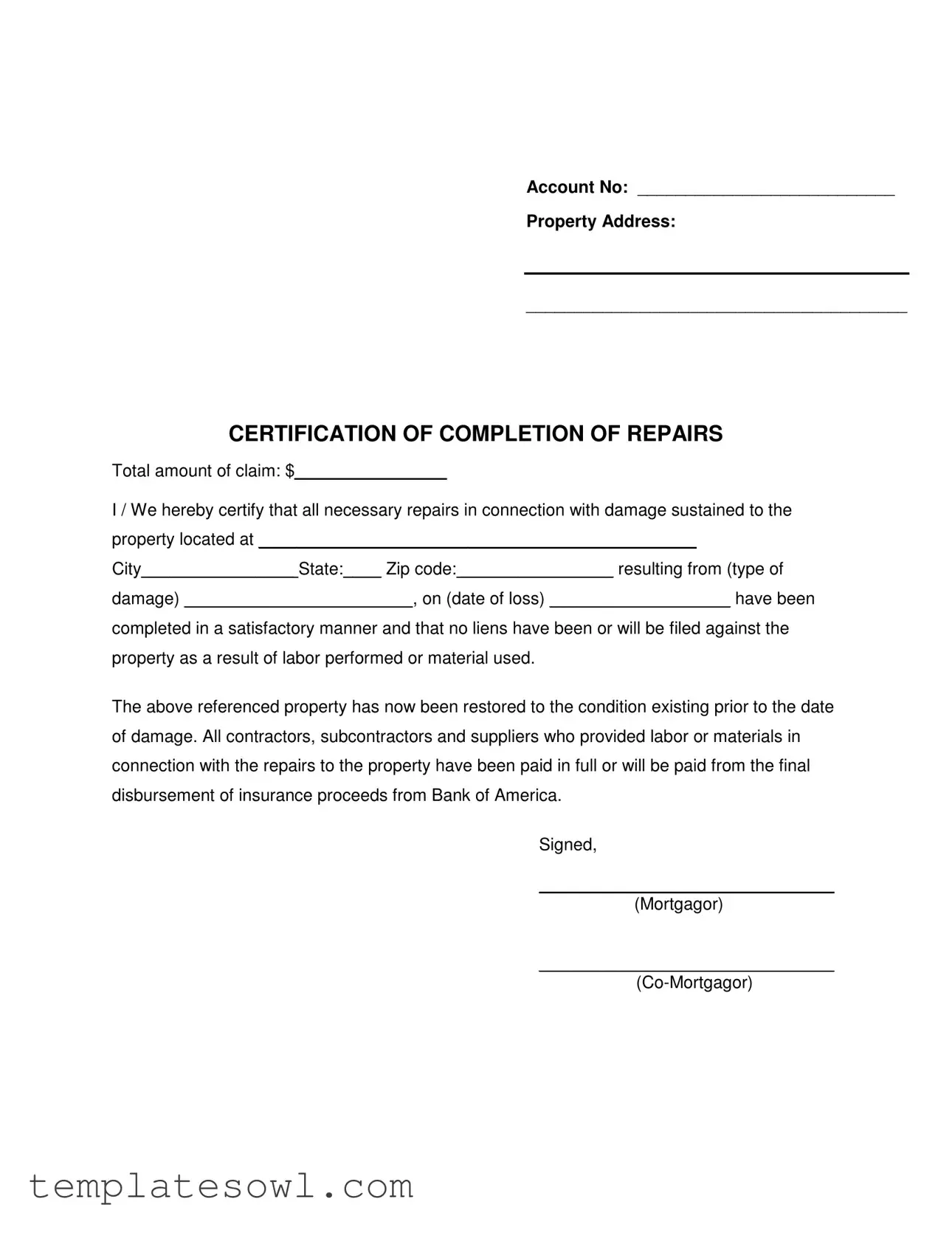What is the purpose of the Completion Repairs form?
The Completion Repairs form is designed to certify that all necessary repairs to a property have been completed after sustaining damage. It serves as a formal declaration that the property has been returned to its original state prior to the incident, ensuring that all necessary parties are paid and no liens exist on the property as a result of the repair work.
Who needs to fill out the Completion Repairs form?
This form must be completed by the mortgagor, and if applicable, the co-mortgagor. It is often required by insurance companies or lenders to verify that repairs associated with a claim have been finalized before insurance proceeds are disbursed.
What information should be included in the Completion Repairs form?
When filling out the form, essential details like the account number, property address, the total amount of the claim, the specific type of damage incurred, and the date of loss must be included. It is crucial that the information is clear and accurately reflects all repairs made to prevent any disputes in the future.
What does it mean to certify that repairs have been completed satisfactorily?
By certifying satisfactory completion, the signer affirms that all repairs have been executed correctly and are of acceptable quality. This includes ensuring that all necessary contractors, subcontractors, and suppliers have been compensated for their work, satisfying legal and financial obligations linked to the property.
What happens if liens are filed against the property?
Liens against a property can complicate the financial and legal standing of the owner. If liens do arise after the completion of repairs, they must be addressed immediately. The form explicitly states that no liens should exist as a result of the repairs; therefore, failure to uphold this condition can lead to disputes over the insurance claim or further financial encumbrances on the property.
How do insurance proceeds relate to the Completion Repairs form?
Insurance proceeds are often contingent on the completion of repairs. Once the Completion Repairs form is submitted and accepted, it can facilitate the final disbursement of funds from the insurance company. The completed form assures the insurance provider that funds will be used properly to pay off contractors, which can expedite the payment process.
Is the Completion Repairs form legally binding?
Yes, the Completion Repairs form is a legal document. By signing it, the mortgagor and co-mortgagor affirm that the information provided is accurate and can be relied on by third parties, such as lenders and insurance companies. Misrepresentation or failure to comply with the statements made in this document could lead to legal consequences or denial of insurance claims.

